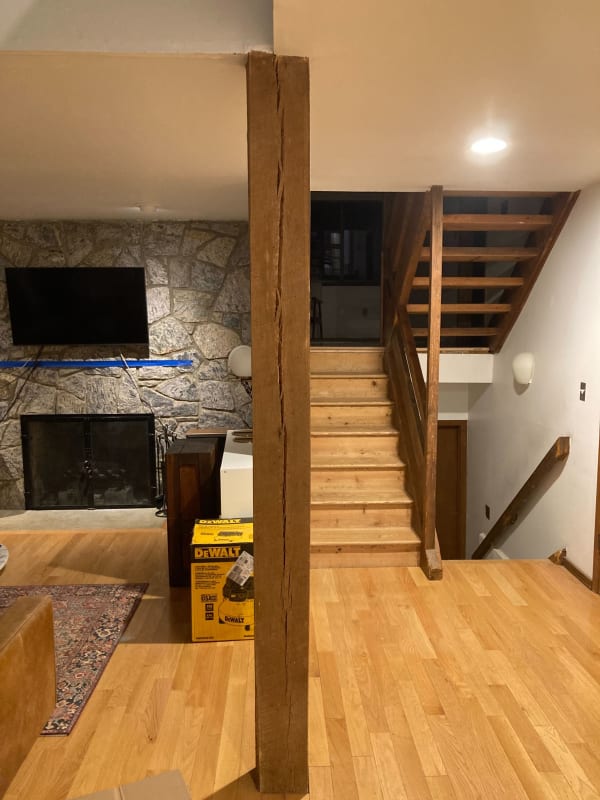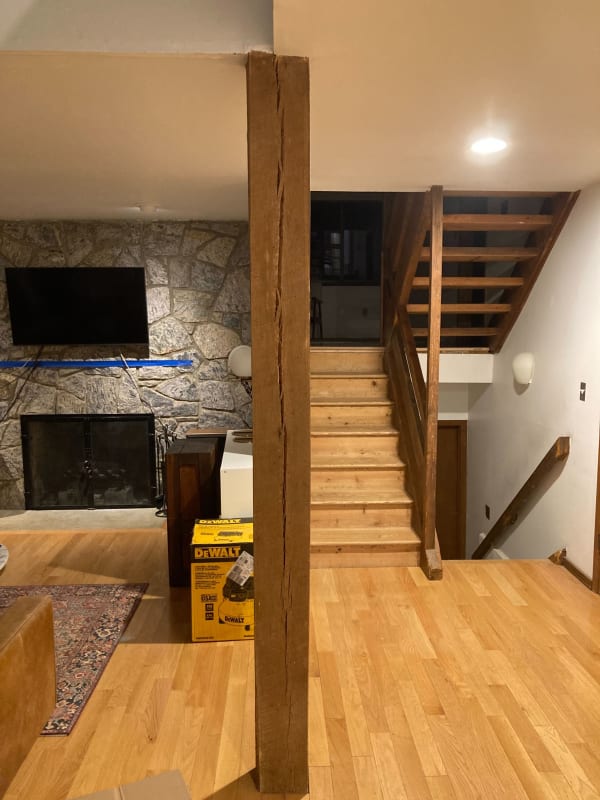Luke C
Computer
- Jan 3, 2024
- 3
Hi all,
I'm new here, and I hope I'm posting to the right place.
I purchased a home about a year ago, and noticed some serious checking in a column in my living room. It doesn't seem to have gotten worse over a year, but I would like to reinforce it as much as possible. I am also willing to pay to have a professional do this, but wanted to know what the best method would be before shopping it around.
I'm including a photo of the post – since it runs up into the ceiling and down into the basement, replacing seems like it would be awfully complicated... I was told by an engineer they make teflon / steel straps that could at least hold the checking in place. Other suggestions have included through-bolts to hold it.
Any advice would be super helpful. Thank you in advance!


I'm new here, and I hope I'm posting to the right place.
I purchased a home about a year ago, and noticed some serious checking in a column in my living room. It doesn't seem to have gotten worse over a year, but I would like to reinforce it as much as possible. I am also willing to pay to have a professional do this, but wanted to know what the best method would be before shopping it around.
I'm including a photo of the post – since it runs up into the ceiling and down into the basement, replacing seems like it would be awfully complicated... I was told by an engineer they make teflon / steel straps that could at least hold the checking in place. Other suggestions have included through-bolts to hold it.
Any advice would be super helpful. Thank you in advance!


